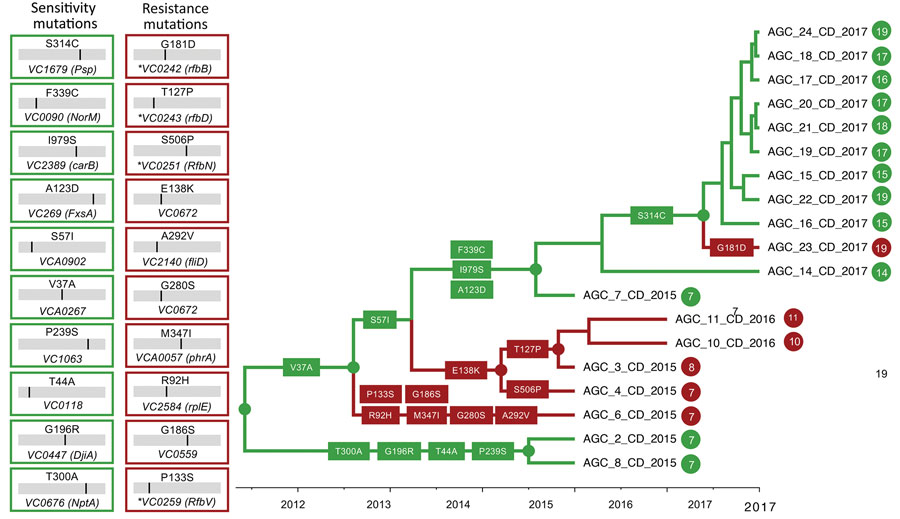Emergence and Evolutionary Response of Vibrio cholerae to Novel Bacteriophage, Democratic Republic of the Congo1
Meer T. Alam
2, Carla Mavian
2
, Taylor K. Paisie, Massimiliano S. Tagliamonte, Melanie N. Cash, Angus Angermeyer, Kimberley D. Seed, Andrew Camilli, Felicien Masanga Maisha, R. Kabangwa Kakongo Senga, Marco Salemi, J. Glenn Morris, and Afsar Ali

Author affiliations: University of Florida Emerging Pathogens Institute, Gainesville, Florida, USA (M.T. Alam, C. Mavian, T.K. Paisie, M.S. Tagliamonte, M.N. Cash, F.M. Maisha, M. Salemi, J.G. Morris, Jr., A. Ali); University of Florida College of Medicine, Gainesville (C. Mavian, T.K. Paisie, M.S. Tagliamonte, M.N. Cash, M. Salemi, J.G. Morris, Jr.); University of California, Berkeley, California, USA (A. Angermeyer, K.D. Seed); Chan Zuckerberg Biohub, San Francisco, California, USA (K.D. Seed); Tufts University School of Medicine, Boston, Massachusetts, USA (A. Camilli); Appui Medical Integre aux Activites de Laboratoire (AMI-LABO), Goma, Democratic Republic of the Congo (R.K.K. Senga); University of Goma, Goma (R.K.K. Senga); University of Florida College of Public Health and Health Professions, Gainesville (M.T. Alam, A. Ali)
Main Article
Figure 4

Figure 4. Phage-resistant or phase-sensitive dynamics and mutational patterns of Vibrio cholerae isolates in the Democratic Republic of the Congo. The boxes show the mutations that have been found along the backbone, internal, or external branches of the maximum clade credibility tree. Each number is the amino acid position of the protein where the mutation was mapped in the tree. The branches are scaled in time and colored on the basis of resistance (red) or sensitivity (green), matching colors in Figure 3. Circles and colors in internal node indicate posterior probability support >0.9 for an ancestor to be resistant or sensitive.
Main Article
Page created: October 18, 2022
Page updated: November 21, 2022
Page reviewed: November 21, 2022
The conclusions, findings, and opinions expressed by authors contributing to this journal do not necessarily reflect the official position of the U.S. Department of Health and Human Services, the Public Health Service, the Centers for Disease Control and Prevention, or the authors' affiliated institutions. Use of trade names is for identification only and does not imply endorsement by any of the groups named above.
